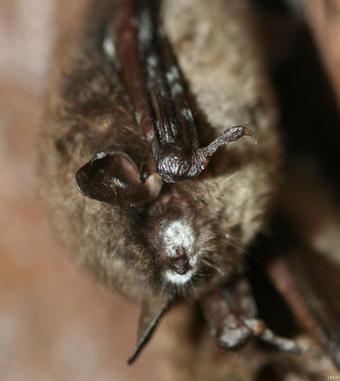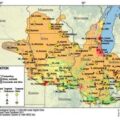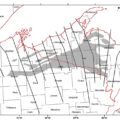[ad_1]
The bat-killing fungus recently detected for the first time in western North America is genetically similar to strains found in the eastern United States and did not likely originate in Eurasia, according to a study published today in the journal mSphere.
The findings have implications for resource managers battling the spread of the devastating disease white-nose syndrome (WNS) in North American bats.
Results of the U.S. Geological Survey and USDA Forest Service study provide clues about the origin of this strain of the Pseudogymnoascus destructans fungus, or Pd. This fungus causes WNS and was recently found on a bat near North Bend, Washington, about 1,300 miles from the previous westernmost detection in Nebraska. Because Pd is also present in Eurasia and North Bend is located near an international port, the scientists studied DNA from the Washington fungus to determine if it had roots abroad.
“Although it remains unclear how Pd reached Washington, this finding guides us to look to North America as the source,” said Jonathan Sleeman, director of the USGS National Wildlife Health Center (NWHC), where the Washington bat was confirmed Pd positive. “Now that Pd has been identified in the western U.S., it’s critical to continue working with resource managers to help conserve imperiled bat species, which are worth billions of dollars per year to North American agriculture and forestry.”
In March 2016, a little brown bat found sick near North Bend tested positive for WNS. Following this discovery, the USGS NWHC provided DNA from the fungus on the bat’s skin to a laboratory at the Forest Service’s Northern Research Station (NRS) for genetic analysis.
“The severity and potential ecosystem-level effects of WNS in North America make it one of the most serious wildlife diseases ever recorded,” said Daniel Lindner, a research plant pathologist with the Forest Service’s NRS and a co-author on the study. “We have made a lot of progress in understanding WNS and in monitoring its spread, but more work is needed to determine how disease impacts will vary among bat populations in eastern and western North America.”
Scientists at the Forest Service’s NRS sequenced DNA from multiple strains of Pd, including the fungus cultured from the Washington bat, to determine that it most closely matched fungal strains from eastern North America.
White-nose syndrome was first documented in New York state in 2006 and has rapidly spread westward in North America to neighboring states and into Canada. The disease has killed millions of beneficial, insect-eating bats and threatens several formerly abundant bat species with extinction.
Based on the current understanding of Pd distribution in North America, scientists cannot determine if the fungus reached Washington from the east by bat movements or through human activities. However, ongoing surveillance efforts coordinated through the multiagency WNS response effort continues to provide insights on the spread of WNS, the impacts of this disease on bat populations and the potential for population recovery.
The national WNS response effort is coordinated by the U.S. Fish and Wildlife Service and involves federal, state and non-governmental organizations, including representatives from the bat conservation and caving communities.
“These results confirm that Pd is capable of movement far across North America. They do not, however, change the importance of taking precautions to reduce the risk of spread by humans,” said Jeremy Coleman, National WNS Coordinator for the U.S. Fish and Wildlife Service. “There’s much we don’t know about how Pd will affect populations of western bats, so it is critical to limit spread as much as possible until we can improve survival of susceptible bats.”
WNS is not known to pose a threat to humans, pets, livestock or other wildlife.
For more information about WNS, please visit the USGS National Wildlife Health Center and Forest Service’s Northern Research Station websites.
[ad_2]
Source link
- Warmer water could cool Montana’s trout fishing economy - September 7, 2022
- Water Released from Crystallizing Magma can Trigger Earthquakes in Yellowstone - September 5, 2022
- Thermal Infrared Remote Sensing at Yellowstone 101 - August 29, 2022







